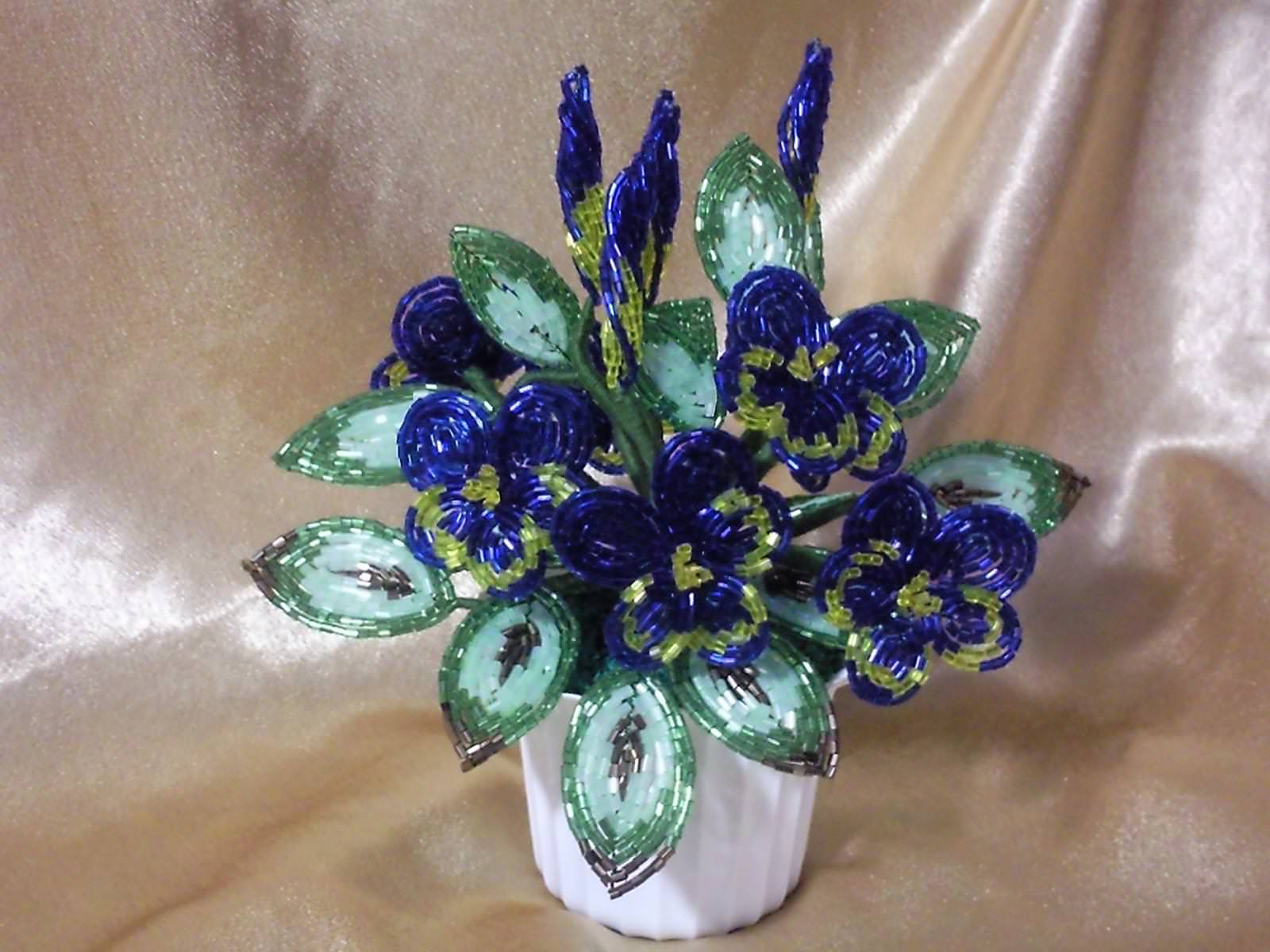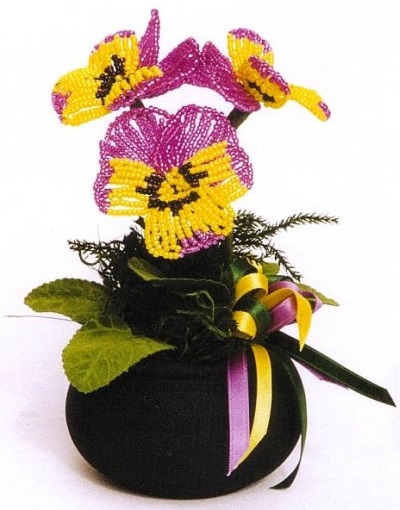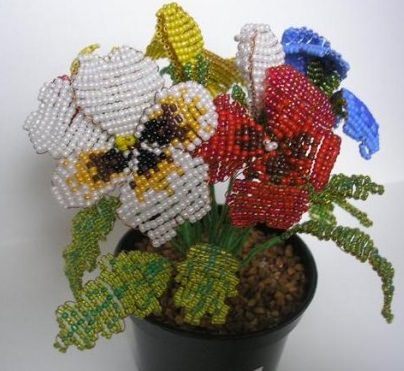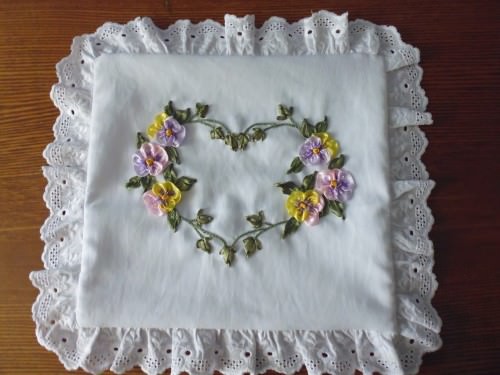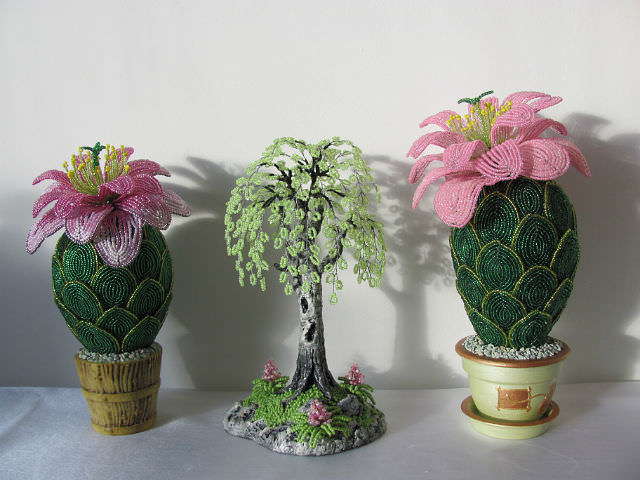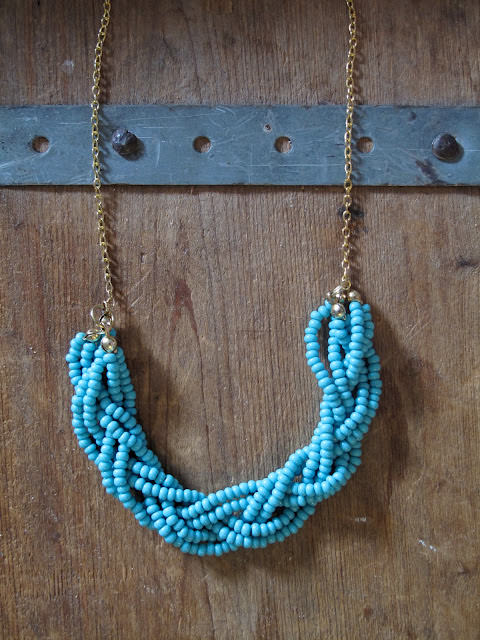
Pansy beads in the technique of parallel weaving (photo and video)
Content
- Master class of weaving pansies from beads
- weaving schemes
- Video: Pansy in French technique
- Video: The lesson of making pansies in pansies
Bright and unusually tender pansies fromBeads can be not only a great decoration for your apartment, but also a wonderful gift for a person close to you. From these colorful, juicy colors you can create cute bouquets, small compositions and even make stunning necklaces and bracelets.
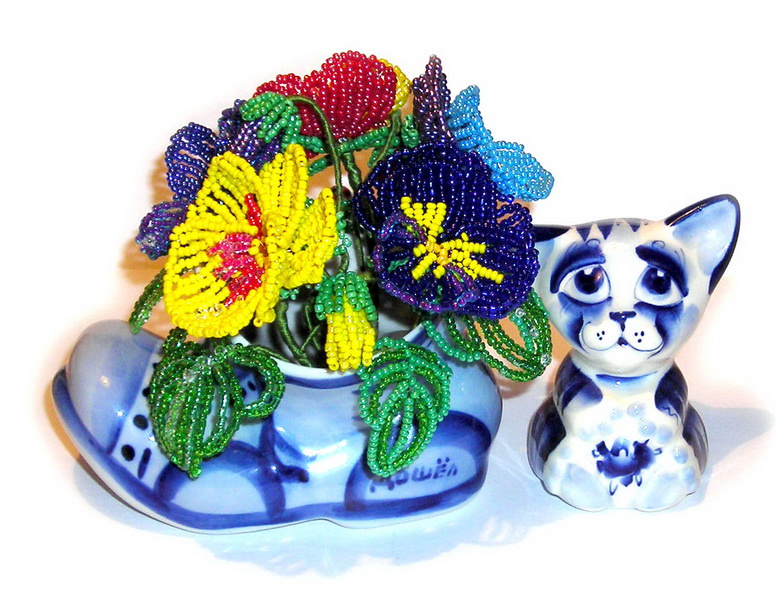
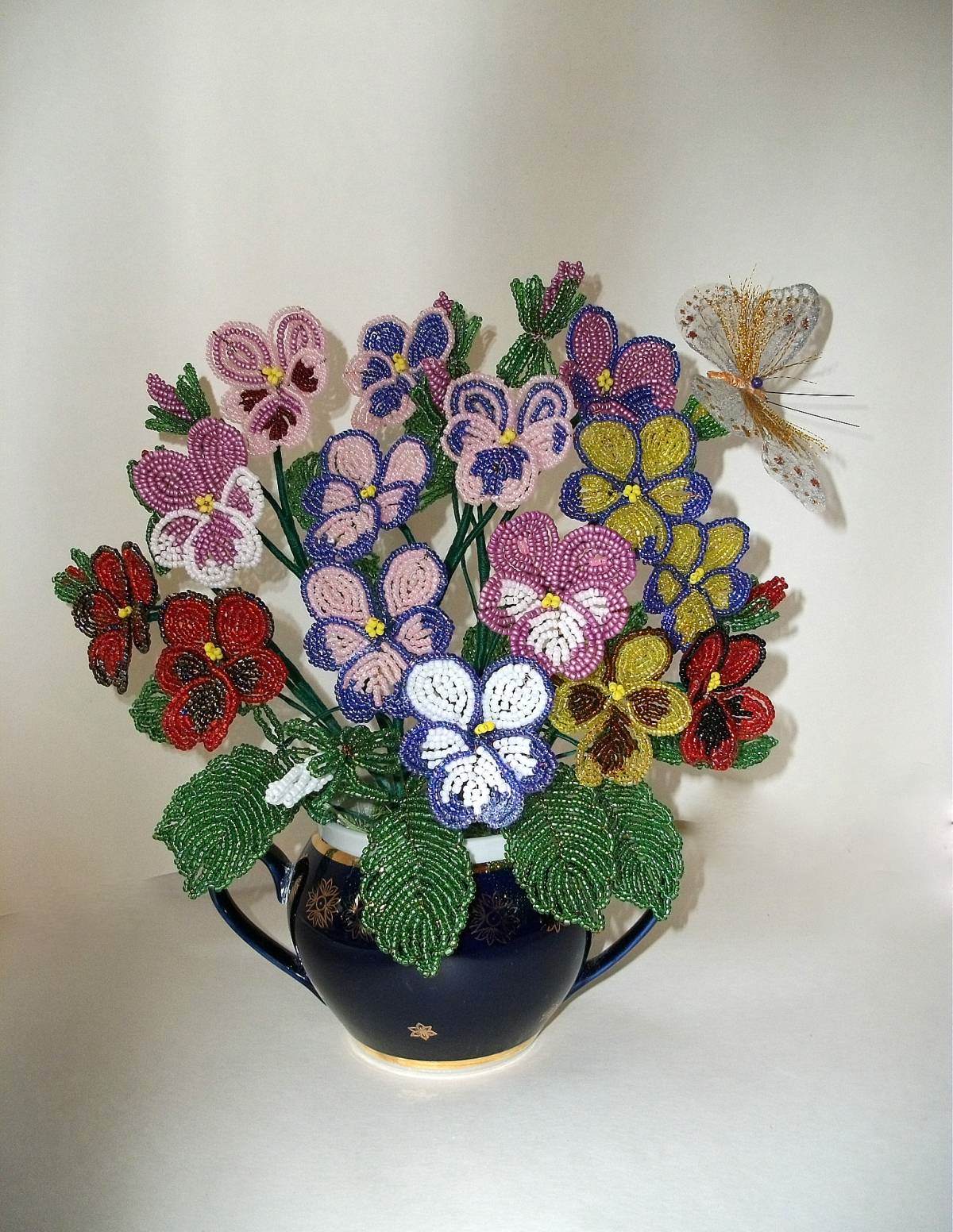


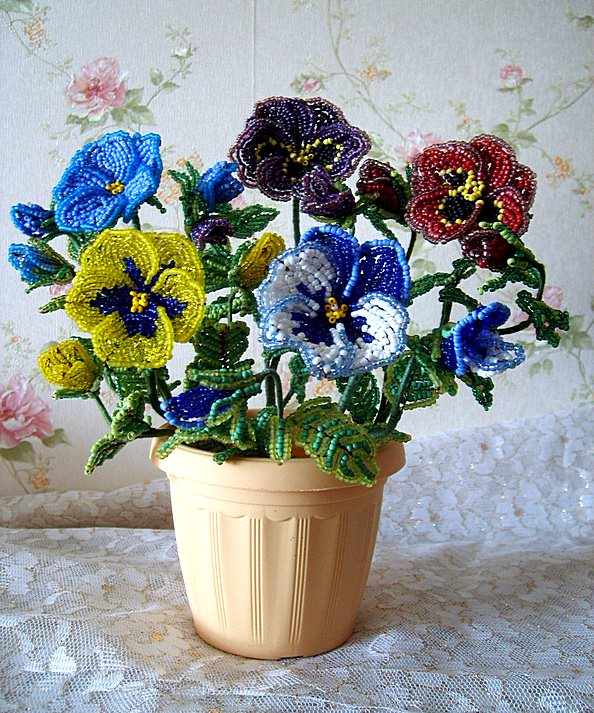
Master class of weaving pansies from beads
Perhaps, it's no secret that beadworkAllows us to realize our boldest and brightest fantasies. Thanks to this kind of needlework, we can make a wonderful bouquet of pansies, which will please us with its beauty throughout the year.
We will begin our master class with the preparation of all the materials necessary for the work. We need:
- Glue "Moment";
- Gypsum or alabaster;
- Pebbles;
- Cloth leaves of a fern or other plant;
- Small flower pots;
- Thin and thicker wire;
- Green mulina;
- Small yellow beads;
- Multi-colored beads: black, orange, green, yellow, brown, white, blue, and also light- and dark-lilac.
Beading of petals To begin with we will masterThe scheme of weaving of the lower lobe. First we will need to thread 11 blue beads on a thin wire, and then, pushing back 5 pieces. To the side through the remaining beads to stretch the wire again. Refer to the photo lesson to clearly understand the process of weaving.
Gently tightening the loop, we will have to string another 1 bead. Now we need to dial 11 more beads and make the exact same loop. In the photo we see the first row of the future petal.
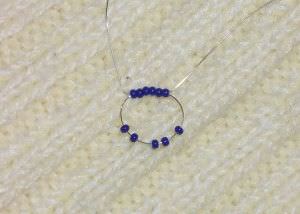
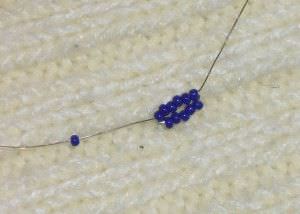
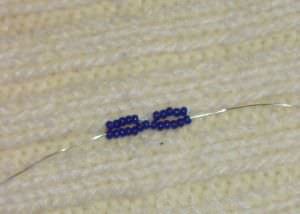
In order to weave the entire petal we will need to execute 8 more rows, each of which will consist of beads of two colors:
- On the sides of 4 dark beads, and in the center 3 light;
- In the middle there are 9 light beads, and on the left and on the right there are 4 dark beads;
- At the edges of the 3 dark, and between them 12 light;
- Middle of 12 light, and edges of 2 dark;
- 2 pcs. Dark, 10 pcs. Light, 2 pcs. Dark;
- 2 pcs. Dark, 7 pcs. Light, 2 pcs. Dark;
- 2 pcs. Dark, 4 pc. Light, 2 pcs. Dark;
- 1 PC. Dark, 3 pcs. Light blue and 1 pc. Dark.
As a result, you should get a narrowed down petal.
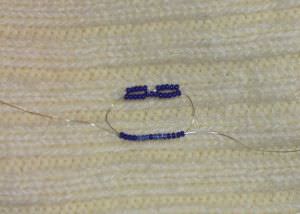
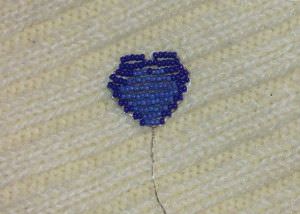
Pay attention to the fact that we do not twist the ends of the wire yet.
Next, we make a side lobe, consisting of light lilac and dark blue beads. The scheme of weaving will remain almost the same. However, this petal will be smaller.
First, we will put 8 blue beads on the wire, and then, on the one hand, we will put another 10 beads and draw through them 1 end of the wire. It turns out immediately 2 rows.
- 3 row will consist of 4 blue, 4 blue and 4 blue;
- 4 row - 3 pieces. Blue, 6 blue, 3 blue;
- 5 row - 2 pieces. Blue, 7 blue, 2 blue;
- 6 row - 2 pieces. Blue, 5 blue, 2 blue;
- 7 row - on the sides blue, and in the center 5 blue;
- 8 row - on the left and on the right one blue, and in the middle 3 blue;
- And the last, 9 row - blue, blue, blue.
We need two such side lobes as in the photo:
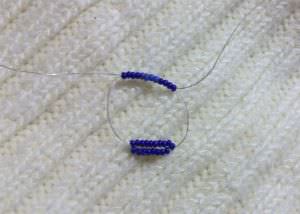
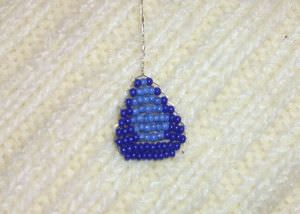
Now we need to do our own twoThe upper lobe is blue. The first row will have 8 beads, the second from 10, the third and the fourth from 12, the fifth from 11, the sixth from 9, the seventh from 7, the eighth from 5, and the ninth of three beads.

You see for yourself that the patterns of weaving petals are quite simple and besides, they practically do not differ from each other in any way.
Do the leaves At the next stage our master class will tell you how to weave green leaves. We will do them according to a similar pattern:
- 1 row - one bead;
- Then two;
- Three more;
- Then six;
- five;
- four;
- three;
- Again six;
- five;
- four;
- three;
- Two.
Acting in this way, we will weave these hands with these leaves:

Please note that all the patterns of weaving are almost identical. And you can independently choose the size for your leaves and petals.
Stamens Our master class is almost coming to an end and we just need to make stamens for flowers. For them we need small beads and wire.
On the wire we put on 2 yellow beads and, having scrolled it, fix the resulting stamen.

Having made the right amount of petals, leaflets and stamens, we will need to twist them together.
Assembling the elements of the flower First we screw the friendTo the friend the upper monophonic petals. Then we attach a stamen to them. Next, twist the side lobes and attach them to the upper ones. Now we will need to fasten the widest petal so that, then you can hide the wire between the side and upper petals. Having formed pansies of beads, you need to fasten to each branch two leaves and wrap all the threads of "Mulina".



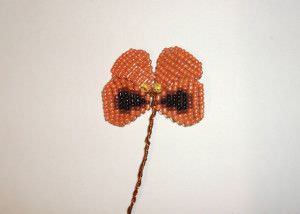
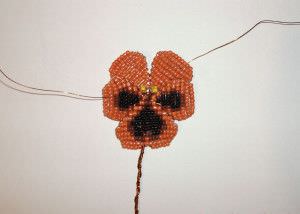
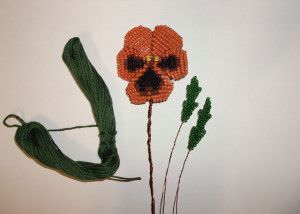
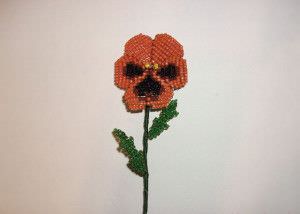
For our bouquet you need to make 7 such wonderful flowers.
After you finish the weaving of flowers and leaves, you will have to "plant" them in a pot or in a pot. To begin with, you will need to glue to the edges of the pot artificial twigs of the fern.
Then you will have to pour alabaster into the potAnd pour on top decorative pebbles. Having done this, you will need to quickly "plant" all the pansies of the beads in the pot. You need to do everything neatly and quickly, as the alabaster dries almost instantly.
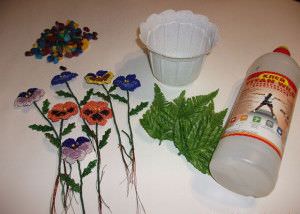

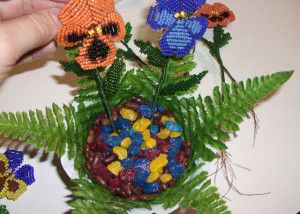
Now our master class can be considered completely finished. Look, what a wonderful summer bouquet we got:
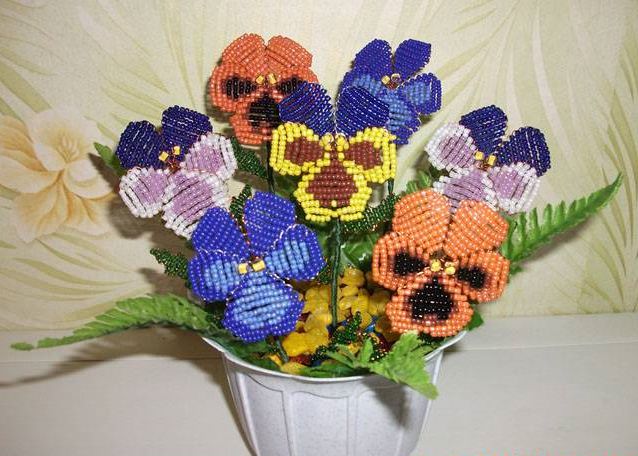
For your pansies you can choose any color scheme. For example, you can get such wonderful flowers as on this photo:
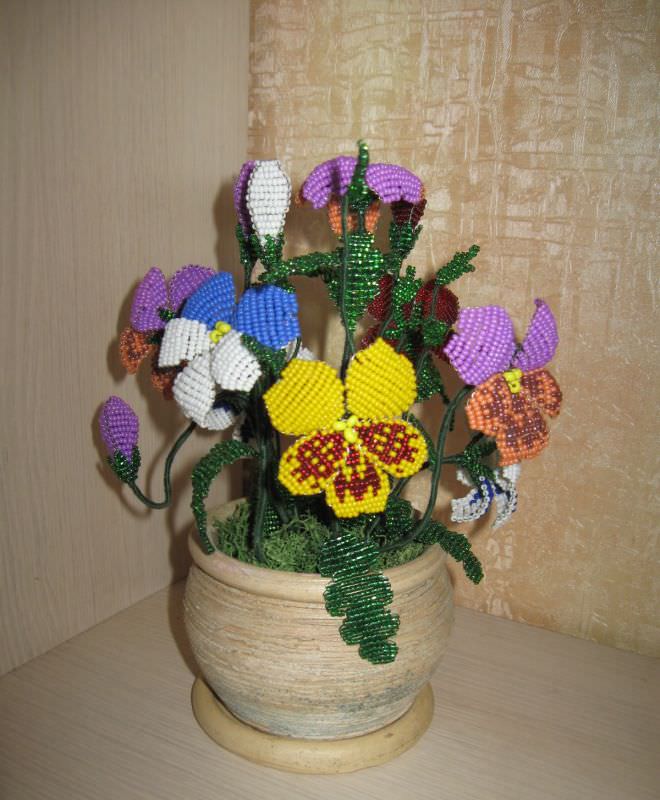
weaving schemes
The technique of parallel weaving will allow us to perform a variety of colors. Here are a few schemes, working on which you can weave leaves and petals for pansies:


The scheme of weaving the upper and side lobes 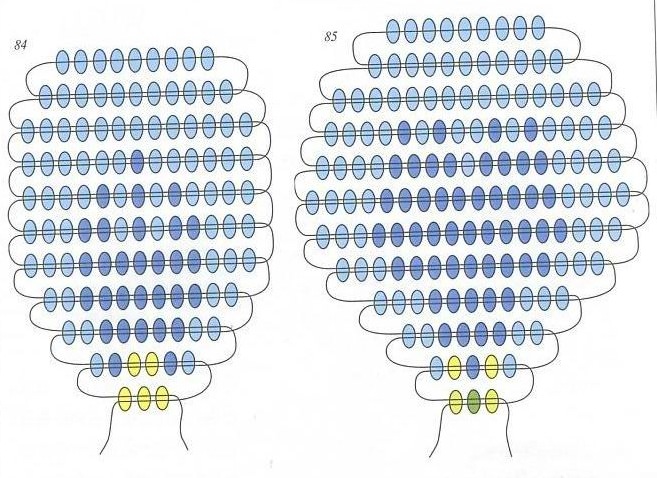
The scheme of weaving sepals 
Scheme of weaving leaves 
Pansies can also be made in French weaving techniques.
In order to look at the finished bouquet of pansies made with the help of French weaving techniques, you can view a small video.
Video: Pansy in French technique
This video clearly shows that all the leaves are monophonic. For their weaving dark green beads are used.
The flowers themselves are made of a rich blue and golden beads. For their core, gold beads are also used. Against the background of a light white vase, the bouquet looks particularly impressive.
In conclusion, I would like to show you some photos on which you will see beautiful, bright and incredibly beautiful pansies of beads:
Bouquet made with the help of "French weaving" technique
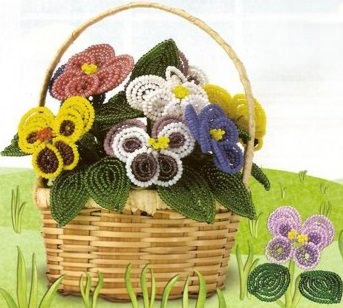
Summer flowers woven with parallel weaving technique
Video: The lesson of making pansies in pansies
